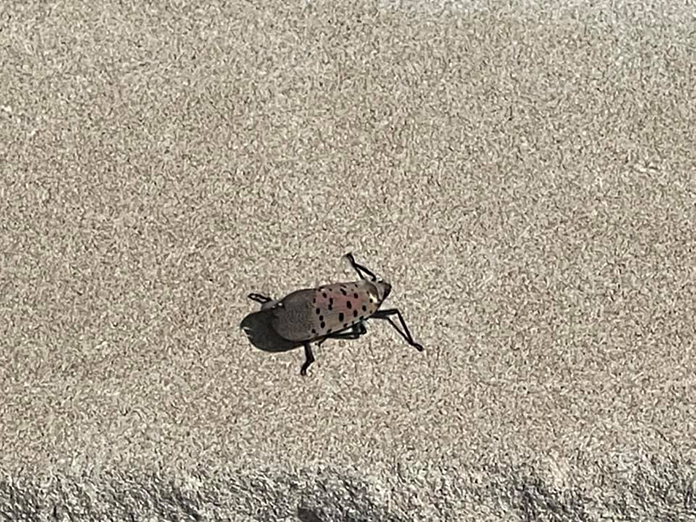
MONMOUTH COUNTY – Recently, the Rutgers Cooperative Extension of Monmouth County has been receiving numerous reports from concerned residents about the spotted lanternfly.
The spotted lanternfly, which is an invasive insect that is native to China, India, and Vietnam, was accidentally introduced into Pennsylvania in 2014 and has since spread to New Jersey.
Although they are not harmful to humans or animals, the spotted lanternfly can feed on the sap of more than 70 plant species including grapes, fruit trees, ornamental landscape plants and hardwood trees.
Monmouth County Commissioner Lillian G. Burry has been working with the agricultural community focusing on the challenges they are facing due to this invasive pest.
“This is not a matter to take lightly,” Commissioner Burry said. “Stopping the spread of the spotted lanternfly will require a coordinated public effort to prevent economic losses to our local farms and businesses.”
Monmouth County was recently added to the spotted lanternfly quarantine zone by New Jersey Secretary of Agriculture Douglas Fisher announced the NJ Department of Agriculture (NJDA). This zone also includes Morris, Middlesex, Essex, Union, Burlington, Camden, Gloucester, Hunterdon, Mercer, Salem, Somerset and Warren.
“The spotted lanternfly’s excellent hitchhiking skills on all types of transportation have allowed it to spread, making it necessary to expand the quarantine zone,” Fisher said. “While we have crews working throughout the state to treat infestations of the spotted lanternfly, we are seeking the public’s assistance by asking anyone who sees this pest to destroy it whenever possible.”
It is important to inspect your car for any spotted lanternflies before traveling out of the quarantine zone to reduce its spread to other areas. Businesses that regularly travel in and out of the quarantine zone are also required to obtain a permit by completing this free online spotted lanternfly training: extension.psu.edu/slf-permit-training-nj.
Adult female spotted lanternflies will soon begin to lay eggs and they can lay up to three egg masses during its life cycle, with each egg mass contains between 30 and 50 eggs. Although the adult spotted lanternfly cannot survive the winter, the egg masses do survive and hatch in the spring. Scouting and destroying their egg masses will help prevent the spread of this invasive pest.
If you see a spotted lanternfly, report the sighting to NJDA using their online reporting tool: nj.gov/agriculture/divisions/pi/prog/pests-diseases/spotted-lanternfly/#reporting-tool.
Additional information regarding control options and management strategies for the spotted lanternfly can be found on the NJDA website: nj.gov/agriculture/divisions/pi/prog/pests-diseases/spotted-lanternfly/homeowner-resources and on the Rutgers Spotted Lanternfly Website: njaes.rutgers.edu/spotted-lanternfly.






